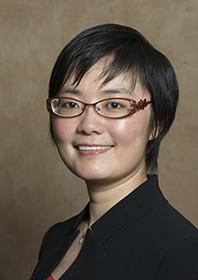
A Project With a Purpose: MBA Students Find Marketing Solutions for ReStore
Monday, June 19, 2017
What’s even better than a class project for a real client? How about one on behalf of an organization that helps fund new homes for local families in need while also reducing waste?
This spring, Carlson School Assistant Professor of Marketing Alison Jing Xu asked the MBA students in her two Buyer Behavior classes to explore a marketing dilemma facing the team at Twin Cities Habitat for Humanity ReStore, a home improvement store that sells donated merchandise, with profits supporting Habitat for Humanity’s core mission.
Since opening a second location in South Minneapolis last September—to go along with one in the northern Twin Cities suburb of New Brighton—the ReStore group had been searching for ways to lure more first-time shoppers into the new store.
It was, as Whitney Delaney, ’19 MBA, puts it, “a real problem in real time.” And, as Xu saw it, the quandary not only meshed well with concepts from the Buyer Behavior class; it would also offer her students freedom to uncover interesting ideas while delivering a variety of recommendations to ReStore. Much to her delight, that’s just how the project played out.
“They identified very creative approaches,” says Xu, who worked with her Marketing Department colleague Mark Bergen, the James D. Watkins Chair in Marketing, to devise the project. “Some of the approaches I didn’t even anticipate.”
Some student teams examined the Minneapolis ReStore’s digital presence, from search engine optimization to social media strategy. Others looked at ways to improve word-of-mouth awareness through connections with realtors, contractors, or other remodeling professionals.
“We were blessed with not just getting a presentation, but eight total solutions” says Pete O’Keefe, ReStore’s senior operations manager. “And where I was incredibly pleased is the fact that, through the teams, the solution varied quite a bit. That’s of huge benefit to us because we can now approach the problem a few different ways, with a few different ideas of either effort or marketing spend.”
Sarah Werbalowsky’s group focused on identifying strategies to optimize merchandise donations as a way to drive sales.
“We looked at how a donor would make a decision to donate: What barriers would be in their mind to donating? What types of individuals would be open to that type of messaging or be motivated?” says Werbalowsky, ’17 MBA, whose team analyzed the geographic breakdown of donations and applied buyer-behavior theories to the donor decision-making process.
“We were blessed with not just getting a presentation, but eight total solutions. ... We can now approach the problem a few different ways, with a few different ideas.”
Edward Blevins, ’18 MBA, and his group were one of several teams to benchmark ReStore against Goodwill, a nonprofit powerhouse with a similar mission. They looked for low-cost ways to bolster ReStore’s online presence, such as Instagram posts highlighting newly donated items to appeal to students from the cluster of universities in the surrounding area.
“College students move with some frequency, and they’re trying to get rid of and get new furniture often,” says Blevins, whose group’s thinking meshed with ReStore data showing furniture sales trending high since the store’s opening.
While some groups conducted their own surveys, ReStore also provided proprietary data for analysis. Store managers also visited each class to share background information to kick off the project and hosted the students for store tours, giving them a firsthand look at the merchandise, which includes plenty of new items donated by overstocked businesses. “When we went there, I think most people were pleasantly surprised,” says Blevins.
Delaney says those personal interactions “really held us accountable.”
“If we didn’t do good work, it was actual real people that we were disappointing,” she says. “They were coming to us because they needed help and they don’t have a huge budget to do marketing or marketing research.”
